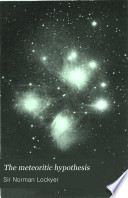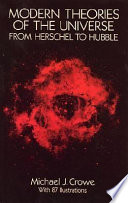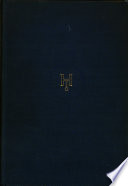 | Sir Norman Lockyer - 1890 - 600 pages
...great facility explain that very extensive, telescopic nebulosity, which, as I mentioned before, is expanded over more than sixty degrees of the heavens,...better for it than clustering stars at a distance. In this case we may also pretty nearly guess at its situation, which must commence somewhere about... | |
 | Smithsonian Institution. Board of Regents - 1911 - 840 pages
...came very near suggesting what is doubtless the true nature and, place in the cosmos, of the nebuhe. I will let him speak in his own words: "A shining...very extensive nebulosity, expanded over more than 60° of the heavens, about the constellation of Orion, a luminous matter accounting much better for... | |
 | Smithsonian Institution. Board of Regents - 1911 - 846 pages
...came very near suggesting what Is doubtless the true nature and, place In the cosmos, of the nebulse. I will let him speak in his own words: "A shining...very extensive nebulosity, expanded over more than 60° of the heavens, about the constellation of Orion, a luminous matter accounting much better for... | |
 | Michael J. Crowe - 1994 - 468 pages
...great facility explain that very extensive, telescopic nebulosity, which, as I mentioned before, is expanded over more than sixty degrees of the heavens,...better for it than clustering stars at a distance. In this case we may also pretty nearly guess at its situation, which must commence somewhere about... | |
 | 1897 - 1074 pages
...case of " Eyes and No Eyes." ' Such work indeed it was, as we shall see, on certain of the nebulae. The nature of these mysterious bodies was still an...about the constellation of Orion; a luminous matter accountingmuch better for it than clustering stare at a distance. . . . If this matter is self luminous,... | |
 | Constance Ann Lubbock - 1933 - 424 pages
...great facility explain that very extensive, telescopic nebulosity, which, as I mentioned before, is expanded over more than sixty degrees of the heavens,...better for it than clustering stars at a distance. "The nature of planetary nebulae, which has hitherto been involved in much darkness, may now be explained... | |
| |